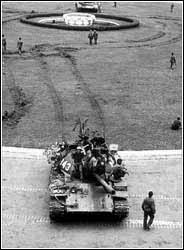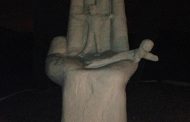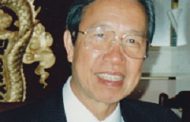 Since the fall of Saigon, I have had 35 years to think about what went wrong. Even before that fateful April 1975, I had had 10 years of government service to witness the mistakes of American and Vietnamese leaders responsible for managing the war.
Since the fall of Saigon, I have had 35 years to think about what went wrong. Even before that fateful April 1975, I had had 10 years of government service to witness the mistakes of American and Vietnamese leaders responsible for managing the war.
From the very beginning of America’s commitment in Vietnam, there was a huge gap of understanding between Americans and Vietnamese that led from one misunderstanding to another about each other’s intentions, good will, expectations and much else.
Indeed, Americans, with their gung-ho, can-do, task-oriented attitude, had the tendency to take control in their partnership with the Vietnamese, even at the risk of stepping on our toes. The Vietnamese, proud of their Confucian traditions and steeped in a millennial historical consciousness, resisted and even ignored advice from pushy American advisers and condescending commanding generals.
The understanding gap led to fateful decisions on the American side, such as encouraging the Vietnamese generals to stage a coup against President Ngo Dinh Diem and his brother-adviser, which ended tragically in their deaths. This marked the beginning of the end of South Vietnam in its fight against the invaders from the North.
Once President Johnson decided to send combat troops to help South Vietnam, the American generals quickly took charge of the war. They fought a conventional war against communist insurgents who at first fought the only way Vietnamese knew how against a superior enemy, as guerrillas – disappearing only to reappear when the superior force moves on. The fact that the war often was directed from the White House only added another layer of intervention, which tied the hands of generals in the field.
While the communist invaders and the local Viet Cong insurgents could roam all over the South, the American and South Vietnamese sides were not allowed to go north to bring the war to where it would hurt. For a long time, they were not even allowed to go into Cambodia, where the North Vietnamese withdrew whenever they needed rest and recuperation.
Even after President Nixon went to China and met with Mao Zedong, the Americans were still leery of Chinese intervention should our side take the fight to North Vietnam. Thanks to documents recently declassified, the Associated Press’ Calvin Woodward reported in 2006 that Henry Kissinger, then national security adviser, told Prime Minister Chou En-lai something to the effect that “in my view, after peace is restored, the political orientation of what comes afterward is of no concern to the U.S.” and that “if we can live with a communist government in China, we ought to be able to accept it in Indochina.” This practically amounted to giving assurance that the United States would not engage in Vietnam after a communist victory.
At the height of its engagement, the U.S. had a half-million troops in Vietnam. It had been suggested that had the Americans deployed those men on our side of the 17th parallel from the Ben Hai River all the way into Laos and then mined the port of Hai Phong, interdicting war supplies to the communists, they could have choked off the Ho Chi Minh Trail, leaving it to the South Vietnamese armed forces to take care of the guerrilla insurgents in the South – something we could have handled without much difficulty. In fact, the Ho Chi Minh Trail could have been cut off with far fewer troops. One study done at the time even suggested 60,000 could have done the job.
With such a strategy, the U.S. would not have lost more than 58,000 killed in action and untold numbers of wounded, and the antiwar movement never would have had enough wind in its sail to pressure Congress to cut off all assistance to the South, leaving it defenseless.
The greatest irony of the Vietnam War was that when tired of the conflict, President Nixon thought of Vietnamization as a way to put the whole burden on the South Vietnamese army. The word Vietnamization implies that during the entire 10 years of massive American intervention, the only ones fighting were the Americans, while the million or so Vietnamese troops and militia were sitting on their behinds watching the show.
Nothing could be further from the truth. While American bravery in places such as Khe Sanh, essentially a diversionary battle, was glorified in the American press, untold battles fought and won in places like An Loc, Quang Tri and many other locations by the South Vietnamese armed forces were ignored by American journalists, some of whom even had the temerity to call our heroic fighters “rabbits.” They predicted as early as 1968 that the end was near despite the fact that the communists suffered 40,000 casualties, or half of the attacking force in their Tet offensive of 1968.
Those Vietnamese troops suffered nearly a half-million casualties while fighting to defend South Vietnam and, by some calculation, killed four times as many communists.
America’s Vietnamization takeover stripped us of our just cause as we fought against the aggressors while reinforcing the communists’ claim that they were patriots defending the motherland against imperialists and their puppets.
As far as the Vietnamese side was concerned, we also made monumental mistakes. With the encouragement and even the blessing of the highest-ranking American officials, our politically immature top-ranking generals staged a coup against a democratically elected president and murdered both him and his brothers, Nhu and Can.
Yet, after seizing power, the generals were incapable of governing the country and tried coups and countercoups against one another, thus sapping whatever energy remained in the country to fight the Viet Cong.
When the communists started their final push against President Nguyen Van Thieu, who managed the war from Independence Palace, he ordered the army to pull out of the 1st and 2nd Army Corps area of operations without planning, leading to panicked highways of death, clogged with refugees and evacuating troops under constant communist attack. This tragic mistake accelerated the takeover of South Vietnam.
Our diplomatic representatives in the United States were too busy trying to read the intentions of the American government and Congress instead of spending enough time cultivating meaningful public relations efforts aimed at the American public.
Truth wasn’t important. Even U.S. government officials could not debate because they were too civilized when facing crowds that paraded in the streets of America’s capital under the flag of the enemy.
Inside South Vietnam, our information agencies were not effective in countering the communist propaganda machine, which was quite persuasive when combined with long daggers at night and death threats against the defenseless South Vietnamese population in the countryside.
From 1965 to 1972, I played an increasingly prominent role in the South Vietnamese government’s communications efforts, eventually as a member of the Cabinet. I bear a share of responsibility for not having done my best to persuade Thieu to send our best to the United States to confront the antiwar movement. Eventually, we did launch overseas information offices in Paris, London, Tokyo and Washington, but they came too late to make a difference.
I hope others can learn from all these mistakes.
By Nguyen Ngoc Linh
Nguyen Ngoc Linh was head of South Vietnam’s National Broadcasting System, spokesman for the Prime Minister and, later, Director-General of Information and Propaganda, then Press Officer for the South Vietnam Delegation to the Paris Peace Talks.
Courtesy: The Washington Times











































2 Comments
Robert Pittman
Sir:
I taught at your school in Saigon for about seven months in 1966-67. My
memories of my time there are nothing but wonderful.
My best to you and your family.
(USAF SSgt) Robert P. Pittman
Rosemary Scott (formerly Khanh)
I worked with your wife and others to establish an international school in Ba Huyen Thanh Quan street in 1970-71. They were interesting times. Best wishes to you.